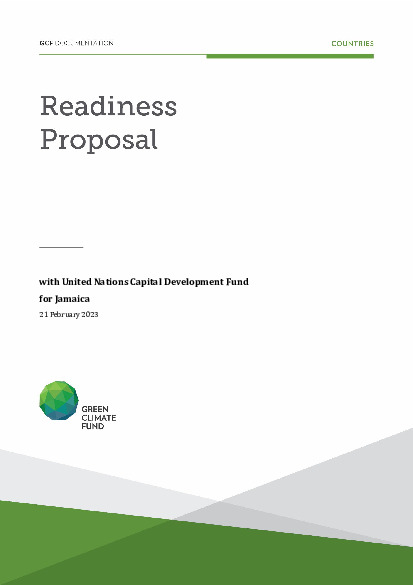Subnational LoCAL Performance-Based Climate Resilience Financing Mechanism in Jamaica (Ja-NAP Local)

Subnational LoCAL Performance-Based Climate Resilience Financing Mechanism in Jamaica (Ja-NAP Local)
The Government of Jamaica (GoJ) seeks readiness support to assist Parishes (i.e. local government entities 1 ), to increase their resilience to climate change by vertically integrating the National Adaptation Plan (NAP) process. To achieve this, the GoJ will collaborate with the Local Climate Adaptive Living Facility (LoCAL), hosted by the UN Capital Development Fund (UNCDF), to establish a locally led and risk-informed Performance-based Climate Resilience Grant (PBCRG) mechanism to respond effectively to climate change adaptation and to strengthen the link between the Paris Agreement and the Sendai Framework on Disaster Risk Reduction 2015-2030 (hereafter Sendai Framework).
Jamaica is currently initiating the implementation of the NAP Readiness proposal (hereafter J-NAP) that aims at developing overarching national adaptation plan. The purpose of the J-NAP Readiness Proposal is to develop an inclusive, systematic, and participatory national adaptation planning and implementation framework for Jamaica by 2025. As noted in the J-NAP proposal, the Government of Jamaica recognizes that there are national and sub-national dimensions to adaptation planning framework and that this requires specific support, J-NAP specifically noted that a complementary proposal will be submitted to address the sub-national dimensions of the NAP process.
Local authorities are increasingly seen as key in the promotion of climate change adaptation and in building resilience to climate change at the local level. They are in a unique position to identify the climate change adaptation responses that best meet local needs, and typically are mandated to undertake the small- to medium- sized adaptation and infrastructure investments needed for building climate resilience – e.g. land use and agriculture, water management, irrigation and drainage, environmental and natural resources management, and disaster risk management. Plus, they have the legitimacy and convening power to coordinate, co-finance and interact with stakeholders, including national level institutions, civil society bodies, the private sector and various local government departments.